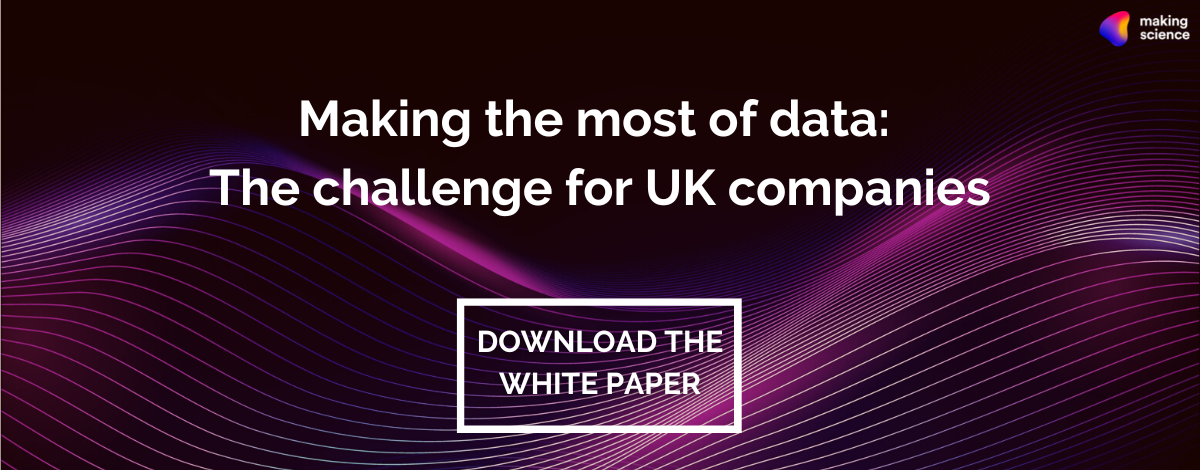In a context where first-party data has become the primary source of information about its users, it becomes essential for companies to understand how to manage this data to achieve business objectives.
The customer is increasingly omnichannel, and tracking them by obtaining proper measurements for their digital strategies is as important as it is complex. This is confirmed by data from recent Making Science research, in which just under half of UK companies do not integrate data, thus losing the global customer view needed to make informed decisions.
This is where various solutions for multi-channel data collection, such as the Customer Data Platform (CDP), come into play.
What is a Customer Data Platform (CDP)
A CDP is a tool that allows all of a company’s proprietary data from multiple sources to be collected in one place. This technology is becoming increasingly important in corporate marketing ecosystems because it allows companies to build a complete, fast and convenient view of their users.
In addition to creating a complete and consolidated pool of customer data, CDPs allow individual profiles to be made and continuously enriched with new information from the different channels used by users. Furthermore, integrating with other systems means CDPs seamlessly fit into a broader data management infrastructure.
Privacy and First-Party Data
The digital environment is constantly and rapidly evolving, but some key trends have shaped the path of companies in recent years. These include:
- Regulatory changes: regulations such as GDPR have had a significant impact on how data is collected and used, so much so that, according to research by Making Science, by 2022, less than half of the marketers in Italy will be fully aware of GDPR requirements.
- Privacy controls: Users increasingly demand greater control and transparency over the collected data used to personalise ads.
- Updates: increased controls affect the collection of traditional data (e.g. third-party cookies and device identifiers).
The primary and direct consequence in today’s digital ecosystem is obvious:
- Cookieless and third-party data: with the imminent end of cookies and third-party data, companies have to update their strategies to continue to have data that best inform their marketing activities.
Faced with this scenario, there are several solutions, from the initial collection of data based on the user’s explicit consent with solutions such as Consent Mode and Google Analytics 4 to mitigating any loss of information from our users with data modelling, to using a ServerToServer measurement to collect data as first-party data and own it.
With this concept of first-party data, CDP fits in as a technological solution for data management and its subsequent activation.
That said, the CDP must be understood as a solution, not a stand-alone tool.
How a CDP works
Here is an example of how a CDP works in a very simplified way:
Suppose we currently have much information (much more than we analyse and activate), and this information is located in different sources, which are independent and rarely talk to each other. What does this mean for the company? Data in separate silos causes common mistakes, such as duplication of communication, makes it difficult to get a clear picture of our users’ journey, generates problems in sales attribution, and, above all, does not help in deciding how to allocate budget in the marketing mix and optimise investments.
With CDP, we have a shared space for all data, the initial purpose of which is to standardise and unify information to get a single picture of our customers across all the touch points we generate. This will allow us to activate the data based on each customer and effectively respond to their needs based on where they are in their purchasing journey for a particular product.
How to choose a CDP
When thinking about introducing a CDP in your company, one of the first things to ask yourself is what problem(s) you want to solve.
Subsequently, the type of CDP also depends on the level of digitisation a company is at.
For technology-intensive companies, it may be helpful to create a customised CDP from their tool stack or with the help of a partner. Less technologically advanced companies may prefer to turn to the market for existing solutions.
In each of these cases, we suggest four factors to take into account in making this decision strategically:
- Operationality: when will the CDP be operational? For market solutions, the operation timing will depend on the options for connection to the tools of one’s digital ecosystem. For an ad hoc connection, one must first check the existing connection options and the effort required to create them. This brings us to the second point.
- Connections: which option will connect best with the current tools in use? This should be easier if you are already working with a market solution for other devices. Otherwise, you will have to consider the effort of generating such connections from scratch.
- Scalability: which will give more flexibility to adapt to changes in the future? Market solutions will depend on the evolution of their adaptations. An ad hoc system should facilitate this.
- Cost: which is the most cost-effective solution? At this point, it is essential to consider the initial monetary cost and the cost of evolving the CDP with its objectives and tools in use.
These are just a few hints at what a CDP entails as a solution in today’s digital landscape. It is not an easy decision, which is why it is important to use solutions that align with the market and one’s own specific needs.
From data collection to activation
The next step is to adopt technology that can extract and combine all marketing data with helping create insights that drive strategic choices. Employing the right technologies and processes is another crucial factor in exploiting the full potential of first-party data.
Discover the state of data maturity of UK companies in the latest Making Science research and our recommendations for getting the most out of your data and marketing efforts.









 Cookies configuration
Cookies configuration